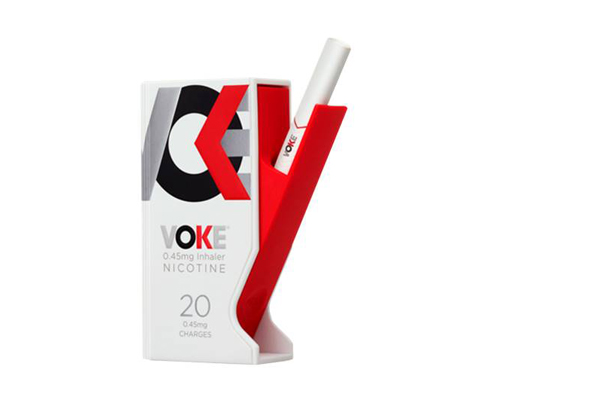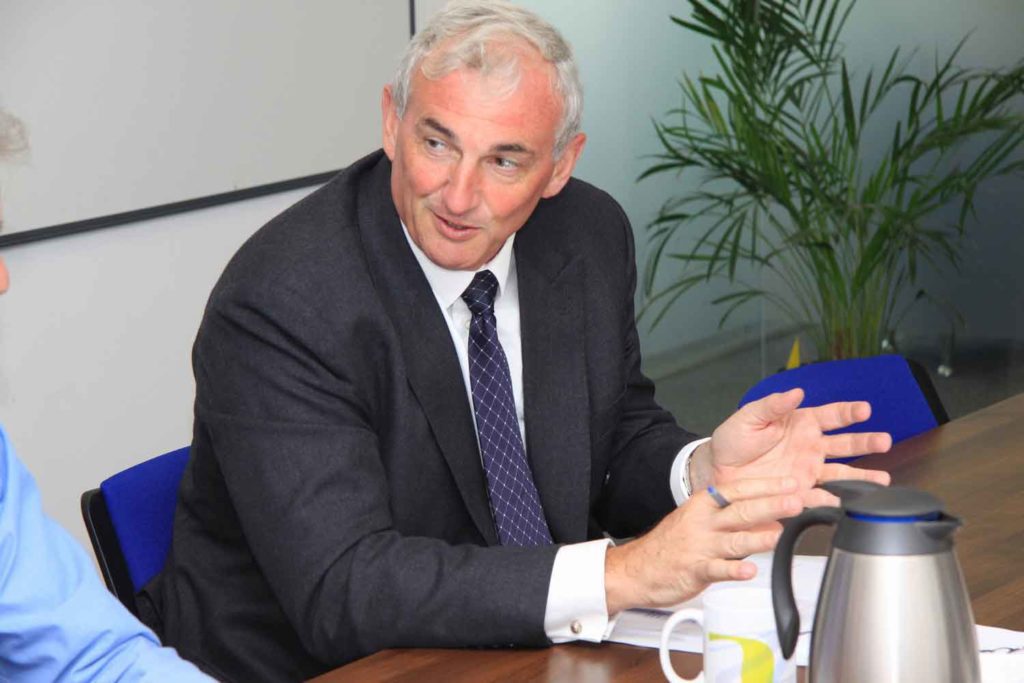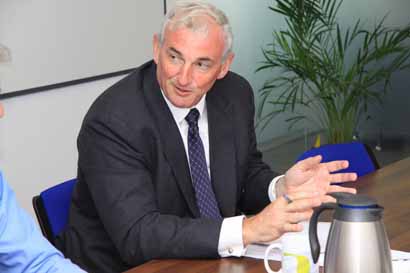
Convinced of the harm-reduction potential of its Voke device, Kind Consumer is looking for a partner to help scale up the manufacturing process.
By George Gay
In trying to reduce the population-wide harm caused by tobacco smoking, those involved in the tobacco, tobacco replacement and nicotine sectors look, in part, at product risk but are aware that developing a product with zero—or close to zero—risk will not of itself eliminate such harm. This is clearly demonstrated by the existence of the nicotine patch.
It is generally recognized that a product’s risk must be set against its performance—mainly its appeal to smokers but also its efficacy in providing a replacement for cigarettes and, if possible, a gateway out of nicotine addiction but not a gateway for nonsmokers into such addiction.
Given this, the question arises as to where Kind Consumer’s cigarette-shaped nicotine inhaler, Voke, will fit on the continuum of risk and performance once it is launched. The first part of this question is easy to answer because, in 2014, Voke was granted a medicinal license from the U.K.’s Medicines and Healthcare products Regulatory Agency. As Paul Triniman, chief executive of Kind, told Tobacco Reporter in January, Voke is on the “moral high ground.”
Triniman, who is a chartered accountant with a good grounding in science, having spent most of his working life in the field of biotechnology, said that one of the ways in which Voke differentiated itself from vapor products, including heated-tobacco products, was that its use did not require the generation of heat. Heat was a major problem in respect of toxicants and excipients, he said, and vapor products, including heat-not-burn products, would always raise safety issues associated with chemical reactions generated by heat.
It is more difficult to answer the second part of the question, concerning Voke’s performance. But here, Triniman pointed out that, from the start, the aim of Kind, which was set up in 2006, was to develop a safer alternative to cigarettes that would address, too, smokers’ psychological and physiological needs.
Does it achieve these aims? Voke has no tobacco, involves no combustion or heating, and produces no clouds of vapor. But it certainly ticks a number of the important sensorial boxes. It delivers nicotine, which is taken in—more efficiently (quickly) than in the case of vapor devices, I’m told—by drawing on something that closely resembles a cigarette, and it provides something to occupy the fingers while talking with friends.

Cool contraption
It offers other advantages, too, but to understand these it is necessary to describe the product briefly for those not familiar with it. The Voke pack, which has an underlying plastic structure and a paperboard cover, is roughly the size, shape and weight of a pack of 20 cigarettes; so it is as convenient as—and arguably more so than—a pack of cigarettes and a lighter. And it is convenient in a way that conventional cigarettes used to be but in many jurisdictions no longer are because, as a medicine, it can be used in public places (at least in the U.K.), some of which are not open even to the use of vapor products.
One side of the pack contains the sort of canister you would find in an asthma inhaler, but which is visible only if you remove the paperboard cover. The canister contains a gas under pressure in liquid form that comprises basically the same gas as would be found in an asthma inhaler, medicinal-standard nicotine and slight menthol-flavor maskings. The other side contains the cigarette-like device that is accessible by pushing on the bottom of the appropriate side panel that is hinged below the midpoint to allow the panel to open by about 30 degrees—a movement that provides an excellent fiddle factor.
To use the device, the consumer removes the cigarette-like device and fills it from the canister as one would fill a refillable lighter—by pressing the non-mouth end of the “cigarette” to the canister’s valve, which is accessible at the bottom of the pack. And this leads on to what some consumers might see as two other advantages. One fill of Voke’s “cigarette” provides for a period of consumption that aligns with that of a traditional cigarette, while one canister provides for about 20 “cigarette” refills; so again there is continuity for cigarette smokers.
The “cigarette” is activated by drawing on it, which opens a valve causing the liquid to expand into an aerosol that is inhaled. There is no visible exhalation, which means that the product is discreet to use and raises no secondary inhalation issues.
Triniman told me that Voke was a “Marmite” product—that is, you either loved it or loathed it—and he admitted that it could take some time to adjust to it. Partly this adjustment period could be put down to the fact that Voke, which, as is mentioned above, uses no heat, offers a cold experience, rather than the hot or warm experience of a traditional cigarette or vapor product. To get an idea of your first experience of Voke, imagine that you have been offered some soup and, believing it to be hot, put it to your lips only to find that it is vichyssoise. Your initial reaction would be one of surprise, but you would probably go on to enjoy the soup.
Playing field
Having tried Voke briefly and having overcome that initial surprise, I can certainly see its appeal. And it has been tested—over 13 weeks on about 160 committed smokers in Edinburgh, Scotland, and Leeds, England. The result, Triniman said, was that about 50 percent of the participants ended with a positive buy intent, and of those, 40 percent thought that they would substitute 75 percent or more of their cigarette consumption with Voke consumption.
So why isn’t it on the market? Well, clearly, commercializing such a differentiated product takes time, but, to a certain extent, Voke was overtaken by circumstances. When work on it started, it was believed that, under the then-forthcoming revised EU Tobacco Products Directive, all vapor products would need to have a medicines license, but such a requirement fell by the wayside. So Voke, a device expensively developed within all of the constraints necessary to make it conform with a medicines license, is competing with devices developed at less expense without such constraints.
This clearly rattles Triniman, who said he would like to see clarity brought to bear on regulations governing such products. What was unacceptable was an uneven playing field. “We are believers in regulations for such products, not necessarily because we think regulation is a good thing in itself but because we think the quality control of the products is very important,” he said. “We think the consumer is deserving of reliable quality, and without regulation it is difficult to see how you would achieve that.
“We’ve taken the moral high ground and sought approval as a medicine, which is what we understood everybody else would have to do, and that has not turned out to be the case. And I think that is commercially challenging for us. We went to a lot of time, trouble and expense to achieve a license.”
Full focus
But while Triniman believes that the situation is commercially challenging, it would be wrong to give the impression that he is not optimistic about the future. Voke is a very exciting product that offers a major opportunity for somebody, he said. What he was alluding to here was the fact that Kind is looking for a partner or partners to help it commercialize Voke. In January, Kind and British American Tobacco (BAT), which had partnered with Kind in developing Voke, announced that they were going their separate ways. Kind, according to the announcement, was going to take back ownership for the commercialization of Voke, allowing it to “embrace the full economics of the opportunity.”
While this might sound like a negative for Voke, given BAT’s experience, size and reach, it was probably a good move for both companies. It allows BAT to put its efforts behind its vapor and heated-tobacco products while getting out from underneath a product that is not a natural fit within its portfolio. And it allows Kind to concentrate on commercializing Voke in the way it thinks best.
And Triniman sees that as an exciting prospect. “If we were to capture 1 percent of the U.K. smoking market by volume and sold the product at or about the cost of a packet of cigarettes, we would have a product that was twice the size of the best-selling U.K. over-the-counter pharmaceutical,” he said. “That is 1 percent. Now if you compare that with the 5 percent of the market that iQOS has just captured in Japan, you can see that relatively modest market penetrations into the smoking market add up to very meaningful numbers.”
So could Voke be sold at a price equivalent to that of a cigarette? “We would want to sell it at less than the price of cigarettes because that makes sense,” Triniman said. “My personal view is that traditional [nicotine-replacement therapies] have been far too highly priced relative to the cost of cigarettes. We want this to be a ubiquitous product. We want the smoker to buy this where he buys his cigarettes and not be put off by the price, in fact be encouraged by the price. I think we are able to do that.”
Global ambitions
In part, Kind would like a partner to help it scale up the manufacturing process, a process that, of itself, isn’t difficult. The raw materials that go into Voke are readily available and could be assembled anywhere in the world given the necessary controls to ensure compliance with the medicines license. The challenge will be in the scale, and, given the scale, the cost of the operation.
And Kind could use help in marketing and distributing the product. And here Voke has a number of advantages. While Voke has a medicines license and could be prescribed by a doctor, it has also an over-the-counter or general sales list label; so it can be sold anywhere, from pharmacies to major retailers, corner shops and garage forecourts. Its U.K. medicines license can probably be leveraged in some other countries—with the notable exception of the U.S.—and, at the same time, there is no reason why Voke, under another name and possibly modified, could not be sold in other jurisdictions simply as a consumer product. The ultimate goal is to offer the product almost worldwide.
As Triniman pointed out, Voke isn’t a product looking for a market. Out there is a market looking for Voke. There are a billion smokers worldwide, and research suggests that most of those derive pleasure, stress relief and relaxation from their habit. Nevertheless, seven out of 10 smokers also want either to cut down or quit their habit now or in the future. So there is a market of smokers who took up smoking because they enjoyed it but realized they would like to do something about it but are unable or unwilling to do so. In 2009, when Kind set out “on the serious development” of Voke, Triniman added, e-cigarettes were still a novelty. Currently in the U.K., 35 percent of smokers either use these products regularly or have used them.
And so what sort of a product is Voke? Is it a medicine? Is it a consumer product? Officially in the U.K., it is a cessation aid and a harm reduction device. But Triniman, a big man who readily admits that he enjoys good food and wine, is always going to steer to the side of risk reduction. Life is pretty dull if you don’t do something, he said. Life isn’t a rehearsal; so it is necessary to make it as pleasurable as was possible. Voke is an alternative product that sits in its own category, he added.
The final question has to be: When will Voke be launched? “Well, the license is held now, so it is ready now, but we have to be able to make it, and that’s the challenge,” said Triniman. “We would hope as soon as possible. Being realistic, it is more likely next year than this year, but I shall probably have a better answer for you in three months.”

Kind Consumer describes itself as a health care research and development company focused on inhalation technologies with innovation programs directed toward pioneering novel inhalation devices that intend to fulfill unmet health problems.
It has a small team of specialists and is still in a pre-revenue stage of its development.
It was founded by Alex Hearn, who studied classics at Oxford University but who is also well-read in science and has a keen business sense that allowed him to start in Oxford an entrepreneurial body, the model for which was taken up by other major universities in the U.K. and the U.S. –G.G.












